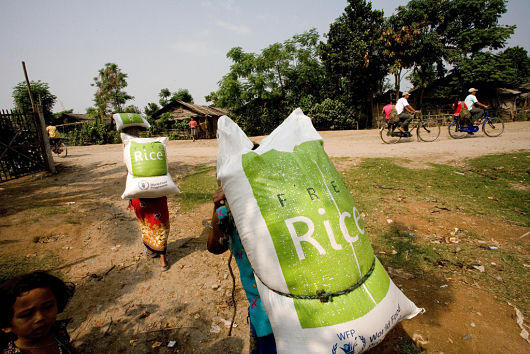Goodeed and Freerice: Two Easy Ways To Help

Helping those in need has never been easier with Goodeed and Freerice, websites that make it incredibly simple for those with computer access to make a difference in the lives of the less fortunate.
Goodeed allows users to donate to a cause for free. How is that possible, donating for free? On the website, you watch a twenty-second advertisement, and the revenue from watching the ad goes to one of three causes: trees, vaccines or meals.
The trees are in the East Khasi Hills in the Meghalaya forest in India. This area is known as the wettest place on earth and is under serious threat. Goodeed partnered with WeForest to not only conserve local biodiversity and the livelihood of the people but also to promote women’s entrepreneurship and empower the indigenous community.
The vaccines are delivered to Chad, where the goal is to completely eradicate polio. Today, 80 percent of people get vaccinated for polio, and Goodeed wants that percentage to be 100. Lastly, the meals go to Kenya schools to ensure that students get at least one nutritious meal a day. Goodeed teamed up with the World Food Programme to make this happen.
Each person can make a total of three donations a day, a grand total of 60 seconds of your time to support three worthwhile causes.
Freerice operates on a similar platform of effortless community involvement. Freerice is an English vocabulary test where, with each question answered correctly, 10 grains of rice are donated.
Freerice works with the World Food Programme to deliver rice to areas in need. They fed 27,000 refugees of Myanmar in Bangladesh for two weeks, and in Cambodia, they provided take-home rations of rice for over 13,500 pregnant and nursing women who needed it over the span of two months. In addition, they have sent rice to Uganda, Nepal and Bhutan.
Freerice is an educational tool for children in the First World, as well as an asset to the Third World. Melissa Foor, a middle school teacher in the United States, used Freerice as a vocabulary lesson for her students. Her classroom, as well as those of other inspired teachers in the school, raised 1,000,000 grains of rice. The students practiced vocabulary and learned a lesson on helping others.
There is a fine line between what people are willing to sacrifice to help others and what they are not. Goodeed and Freerice have made this sacrifice so minimal that making a difference in the lives of others takes no more than 60 seconds, and you can even have a little fun while doing it.
– Hannah Resnick
Sources: Freerice, Goodeed, The Next Web, World Food Programme
Photo: World Food Programme
